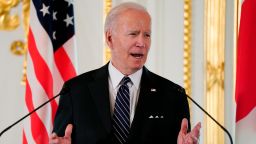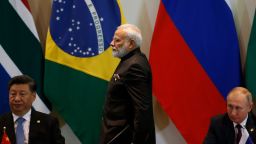The Quad itself is not a formal military alliance, but alliances and agreements exist among its members.
US and Japan: Foremost among these is the US-Japan Mutual Security Treaty, a document signed in 1951 at the same time as the Treaty of San Francisco, which formally ended World War II.
The Council on Foreign Relations (CFR) calls the US-Japan pact “the cornerstone of U.S. security policy in East Asia for decades.” Article IV of the treaty commits Washington to defend Japanese territory and Japan to defend US forces within its territories.
And those forces are substantial. According to a November report from the CFR, more than 60,000 US active duty military personnel and Department of Defense civilians are permanently stationed in Japan, more than any other foreign country.
US and Australia: Australia also shares a mutual defense treaty with the US: the Australia, New Zealand and United States Security Treaty, or ANZUS Treaty, signed in 1951.
While the US and New Zealand no longer have a security relationship through ANZUS, US-Australia links have remained strong, with Canberra even invoking its defense clause to help Washington respond to the Sept. 11, 2001, terror attacks on the US.
In a webpage about what it calls US-Australia “mateship,” the Australian Embassy in Washington notes that 500 Australian defense personnel are stationed in the US while US Marines are stationed in Darwin, in Australia’s Northern Territory.
Apart from the US, the other Quad countries have been setting up bilateral security arrangements.
Japan and Australia: In January, Canberra and Tokyo signed a “reciprocal access agreement,” which streamlines procedures for their militaries to access each other’s facilities and enhance joint exercises and training.
That pact built upon a joint security declaration of 2007, under which the two set up joint defense exercises and agreed to cooperate on areas such as maritime and aviation security and counterterrorism among others.
India and Australia similarly agreed on a “comprehensive strategic partnership” in 2020. Part IV of that pact said, “both sides agreed to continue to deepen and broaden defense cooperation by enhancing the scope and complexity of their military exercises and engagement activities to develop new ways to address shared security challenges.”
India and Japan: Also in 2020, India and Japan signed an Agreement on Reciprocal Provision of Supplies and Services, which makes it easier for the two countries’ militaries to share logistics in joint endeavors.
And Washington and New Delhi have been forging stronger ties in recent years. At a meeting of their defense ministers in Washington earlier this year, US Defense Secretary Lloyd Austin announced a new pact to cooperate in space, deepen cooperation in cyberspace and expand “information sharing partnership across all warfighting domains.”





















